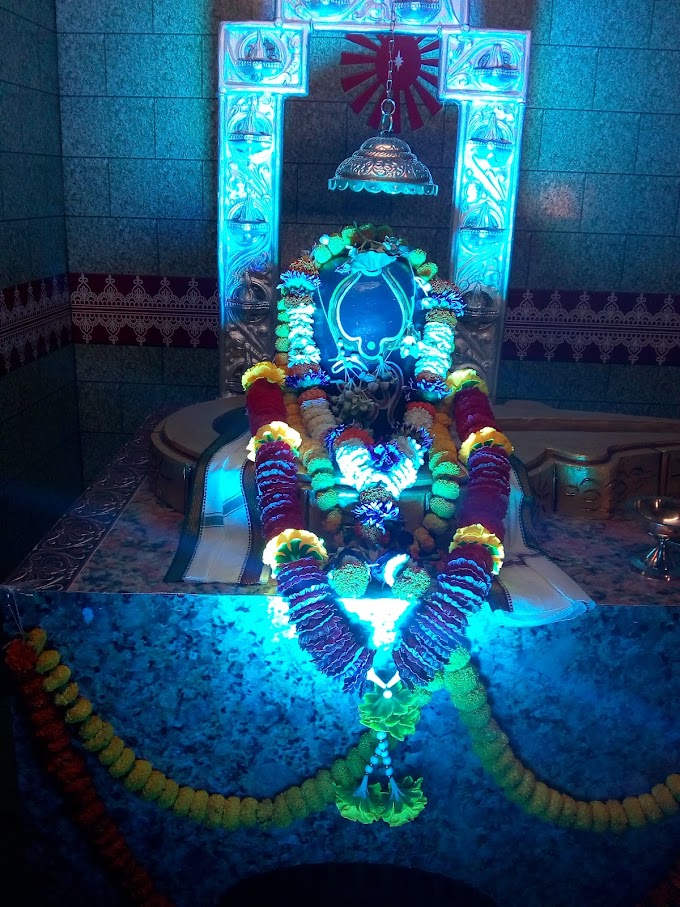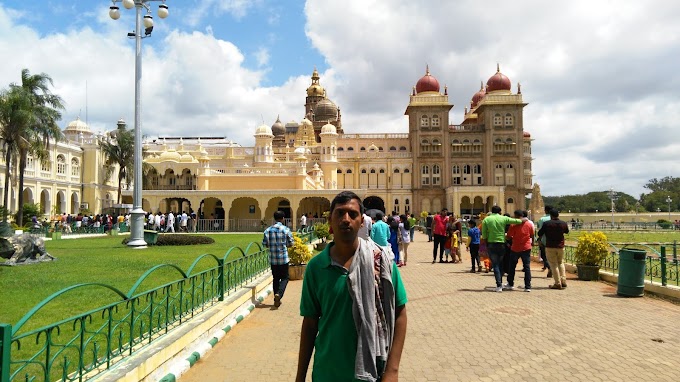MOKSHA
Moksha is derived from the word “muc” which means free,
release, liberate. As per Vedas and early Upanishads, the word “ mucyate “ which means to be set
free or liberation. The concept of moksha become
visible much later in ancient Indian literature than the concept of dharma. In the Vedas,
there were four stages of life: Brahmacharya
(student), Grihastha (householdship), Vanaprastha
(retirement) and Sannyasa.
Balinese Hinduism incorporates moksha as one of five tattwas.
The other four are: brahman (the one supreme god head, not to be confused with
Brahmin), atma (soul or spirit), karma (actions and reciprocity, causality),
samsara (principle of rebirth, reincarnation). Moksha, in Balinese Hindu
belief, is the possibility of unity with the divine; it is sometimes referred
to as nirwana.
Dharma and moksha, suggested Nagarjuna in the 2nd century,
cannot be goals on the same journey. The differences between the world we live
in and the freedom implied in the concept of moksha. They are so different that
dharma and moksha could not be intellectually related. Dharma requires worldly
thought, moksha is unworldly understanding, a state of bliss. How can the
worldly thought-process lead to unworldly understanding? asked Nagarjuna.
Among the Samkhya, Yoga and Vedanta schools of Hinduism,
liberation and freedom reached within one's life is referred to as jivanmukti,
and the individual who has experienced this state is called jivanmukta
(self-realized person). Dozens of Upanishads, including those from middle
Upanishadic period, mention or describe the state of liberation, jivanmukti.
Some contrast jivanmukti with videhamukti (moksha from samsara after death). Jivanmukti
is a state that transforms the nature, attributes and behaviors of an
individual, claim these ancient texts of Hindu philosophy.
About the middle of the 1st millennium BC, new religious
movements spreading along the Ganges River valley in India promoted the view
that human life is a state of bondage to a recurring process of rebirth
(samsara; see also reincarnation). These movements spurred the eventual development
of the major religions of Buddhism, Jainism, and (during subsequent centuries)
Hinduism. These and many other religious traditions offered differing
conceptions of bondage and diverging paths to moksha. Some, such as Jainism,
posited an abiding self that became liberated, while others, such as Buddhism,
denied the existence of a permanent self.
Starting with the middle Upanishad era, moksha - or equivalent
terms such as mukti and kaivalya - is a major theme in many Upanishads. For
example, Sarasvati Rahasya Upanishad, one of several Upanishads of the bhakti
school of Hinduism, starts out with prayers to Goddess Sarasvati. She is the
Hindu goddess of knowledge, learning and creative arts, her name is a compound word of ‘‘sara’’ and
“sva” which meaning "essence of
self". After the prayer verses, the Upanishad inquires about the secret to
freedom and liberation (mukti).
The six major orthodox schools of Hinduism have had a historic
debate, and disagree over whether moksha can be achieved in this life, or only
after this life. Many of the 108 Upanishads discuss amongst other things
moksha. These discussions show the differences between the schools of Hinduism,
a lack of consensus, with a few attempting to conflate the contrasting
perspectives between various schools. For example, freedom and deliverance from
birth-rebirth, argues Maitrayana Upanishad, comes neither from the Vedanta
school's doctrine (the knowledge of one's own Self as the Supreme Soul) nor
from the Samkhya school's doctrine (distinction of the Purusha from what one is
not), but from Vedic studies, observance of the Svadharma (personal duties),
sticking to Asramas (stages of life).
Kathaka Upanishad, a middle Upanishadic era script dated to be
about 2500 years old, is among the earliest expositions about saṃsara and moksha. In Book I, Section III, the legend of boy
Naciketa queries Yama (the lord of death) to explain what causes saṃsara and what leads to liberation. Naciketa inquires: what
causes sorrow? Yama explains that suffering and saṃsara results from a life that is lived absent-mindedly, with
impurity, with neither the use of intelligence nor self-examination, where
neither mind nor senses are guided by one's atma (soul, self). Liberation comes from a life lived with inner
purity, alert mind, led by buddhi (reason, intelligence), realization of the
Supreme Self (purusha) who dwells in all beings. Kathaka Upanishad asserts
knowledge liberates, knowledge is freedom. Kathaka Upanishad also explains the
role of yoga in personal liberation, moksha.
Some traditions present the plurality of Indian religions as
different paths to moksha. More frequently, however, one tradition will
understand its rivals as lower and less effective paths that ultimately must be
complemented with its own.
Adi Shankara in the 8th century AD, like Nagarjuna earlier, examined the
difference between the world one lives in and moksha, a state of freedom and
release one hopes for. Unlike Nagarjuna, Shankara considers the characteristics
between the two. The world one lives in requires action as well as thought; our
world, he suggests, is impossible without vyavahara (action and plurality). The
world is interconnected, one object works on another, input is transformed into
output, change is continuous and everywhere. Moksha, suggests Shankara, is that
final perfect, blissful state where there can be no change, where there can be
no plurality of states. It has to be a state of thought and consciousness that
excludes action. How can action-oriented techniques by which we attain the
first three goals of man (kama, artha and dharma) be useful to attain the last
goal, namely moksha.
The Advaita tradition considers moksha achievable by removing
avidya (ignorance). Moksha is seen as a final release from illusion, and through
knowledge (anubhava) of one's own fundamental nature, which is Satcitananda.
Advaita holds there is no being/non-being distinction between Atman, Brahman,
and Paramatman. The knowledge of Brahman leads to moksha, where Brahman is
described as that which is the origin and end of all things, the universal
principle behind and at source of everything that exists, consciousness that
pervades everything and everyone. Advaita Vedanta emphasizes Jnana Yoga as the
means of achieving moksha. Bliss, claims this school, is the fruit of knowledge
(vidya) and work (karma).
In earliest Vedic literature, heaven and hell sufficed stereological
curiosities. Over time, the ancient scholars observed that people vary in the
quality of virtuous or sinful life they lead, and began questioning how
differences in each person's puṇya (Dharma, good deeds)
or pap (Adharma, demerit) as human beings affected their afterlife. This
question led to the conception of an afterlife where the person stayed in
heaven or hell, in proportion to their merit or demerit, then returned to earth
and were reborn, the cycle continuing indefinitely. The rebirth idea ultimately
flowered into the ideas of saṃsara, or transmigration -
where one's balance sheet of karma determined one's rebirth. Along with this
idea of saṃsara, the ancient scholars developed the concept of moksha, as a
state that released a person from the saṃsāra
cycle. Moksha release in eschatological sense in these ancient literature of
Hinduism, suggests van Buitenen comes from self-knowledge and consciousness of
oneness of supreme soul.
Yoga, or marga (meaning "way" or "path"), in
Hinduism is widely classified into four spiritual approaches. The first marga
is Jnana Yoga, the way of knowledge. The second marga is Bhakti Yoga, the way
of loving devotion to God. The third marga is Karma Yoga, the way of works. The
fourth marga is Raja Yoga, the way of contemplation and meditation. These margas
are part of different schools in Hinduism, and their definition and methods to
moksha.
Nirvana and moksha, in all traditions, represents a state of
being in ultimate reality and perfection, but described in a very different
way. Some scholars, states Jayatilleke, assert that the Nirvana of Buddhism is
same as the Brahman in Hinduism, a view other scholars and he disagree with.
Buddhism rejects the idea of Brahman, and the metaphysical ideas about soul
(atman) are also rejected by Buddhism, while those ideas are essential to
moksha in Hinduism. In Buddhism, nirvana is 'blowing out' or 'extinction'.In
Hinduism, moksha is 'identity or oneness with Brahman'. Realization of anatta
(anatman) is essential to Buddhist nirvana. Realization of atman (atta) is
essential to Hindu moksha.
When a Jivanmukta dies he achieves Paramukti and becomes a
Paramukta. Jivanmukta experience enlightenment and liberation while alive and
also after death i.e., after becoming paramukta, while Videhmukta experiences
enlightenment and liberation only after death.
The six major orthodox schools of Hindu philosophy offer the
following views on moksha, each for their own reasons: the Nyaya, Vaisesika and
Mimamsa schools of Hinduism consider moksha as possible only after death. Samkhya
and Yoga schools consider moksha as possible in this life. In Vedanta school,
the Advaita sub-school concludes moksha is possible in this life, while Dvaita
and Visistadvaita sub-schools of Vedanta tradition believes that moksha is a
continuous event, one assisted by loving devotion to God, that extends from
this life to post-mortem. Beyond these six orthodox schools, some heterodox
schools of Hindu tradition, such as Carvaka, deny there is a soul or after life
moksha.
The Vedantic school of Hinduism suggests the first step towards
mokṣa begins with mumuksutva, that is desire of liberation. This
takes the form of questions about self, what is true, why do things or events
make us happy or cause suffering, and so on. This longing for liberating
knowledge is assisted by, claims Adi Shankara of Advaita Vedanta, guru
(teacher), study of historical knowledge and viveka (critical thinking).
Shankara cautions that the guru and historic knowledge may be distorted, so
traditions and historical assumptions must be questioned by the individual
seeking moksha. Those who are on their path to moksha (samnyasin), suggests
Klaus Klostermaier, are quintessentially free individuals, without craving for
anything in the worldly life, thus are neither dominated by, nor dominating
anyone else.
The Dvaita (dualism) traditions define moksha as the loving,
eternal union with God (Vishnu) and considered the highest perfection of
existence. Dvaita schools suggest every soul encounters liberation differently.
Dualist schools see God as the object of love, for example, a personified
monotheistic conception of Shiva or Vishnu. By immersing oneself in the love of
God, one's karmas slough off, one's illusions decay, and truth is lived. Both
the worshiped and worshiper gradually lose their illusory sense of separation
and only One beyond all names remains. This is salvation to dualist schools of
Hinduism. Dvaita Vedanta emphasizes Bhakti Yoga as the means of achieving
moksha.
Religion plays a prominent role in Bali, also known as the
island of the Gods. You can see this in their daily rituals, and thus our
philosophy is based on concepts from the main religion here, which is Hinduism.
Moksha, in the Hindu religion and philosophy means liberation, which is the
ultimate goal of human life, to be released from Samsara, the cycle of action,
reaction and rebirth. This represents how we conduct ourselves and how we
present our resort to our guests.











